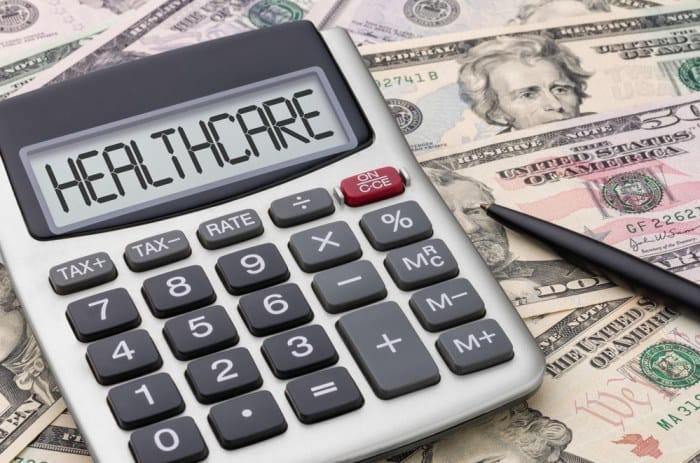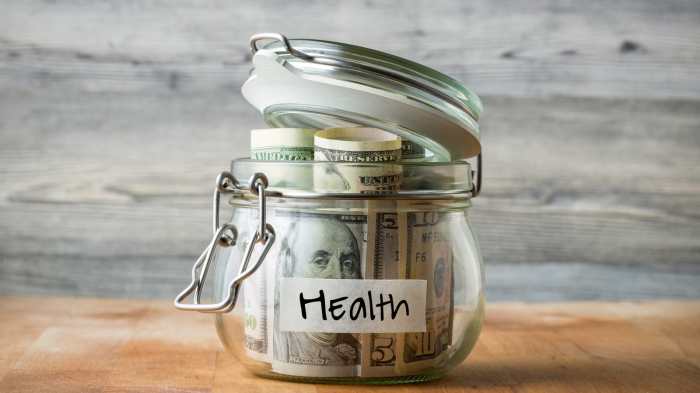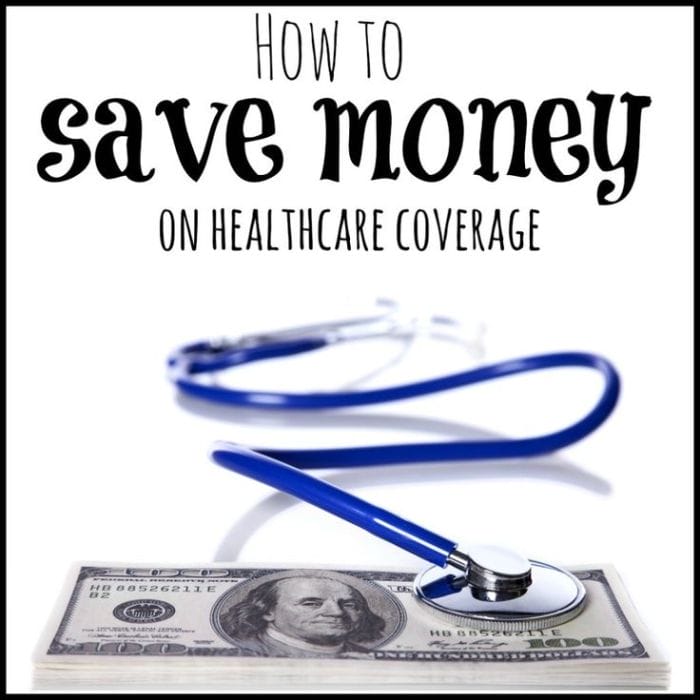In the ever-evolving landscape of healthcare, navigating the intricacies of health insurance can be a daunting task. However, with a strategic approach and a keen eye for value, it is possible to minimize costs and maximize benefits. This comprehensive guide unveils a treasure trove of tips and strategies to help you save money on health insurance, ensuring you receive the coverage you need without breaking the bank.
From comparing plans and utilizing high-deductible health plans to embracing preventive care and exploring wellness programs, this guide equips you with the knowledge and tools to make informed decisions about your healthcare. Learn how to manage prescriptions wisely, optimize out-of-pocket expenses, and take advantage of flexible spending accounts.
Discover the art of negotiating lower premiums and understanding coinsurance and copays to minimize your financial burden.
Compare Health Insurance Plans

Evaluating health insurance plans from different providers is a smart strategy to find cost-effective options that align with your needs. By comparing plans, you can identify coverage that suits your health requirements without overpaying for unnecessary features.
Evaluating Coverage
When comparing plans, assess the scope of coverage offered. Consider the types of medical services covered, including preventive care, specialist visits, hospitalization, prescription drugs, and mental health services. Ensure the plan covers essential services you regularly use or anticipate needing in the future.
Premiums and Deductibles
Premiums are the regular payments you make to maintain your health insurance coverage. Deductibles are the amount you pay out-of-pocket before the insurance starts covering expenses. Higher premiums often correspond with lower deductibles and vice versa. Evaluate your budget and risk tolerance to determine the balance that works best for you.
Copayments and Coinsurance
Copayments are fixed amounts you pay for specific services, such as doctor visits or prescription drugs. Coinsurance is a percentage of the cost of a service you pay after meeting your deductible. Understanding these costs can help you estimate your potential out-of-pocket expenses.
Network of Providers
Consider the network of healthcare providers covered by the plan. If you have preferred doctors or hospitals, ensure they are included in the plan’s network. A broader network typically means more options for care, but it may also come with higher premiums.
Utilize High-Deductible Health Plans (HDHPs)

High-Deductible Health Plans (HDHPs) offer lower premiums compared to traditional health insurance plans. This can save you money upfront. Additionally, HDHPs typically come with tax-advantaggccounts called Health Savings Accounts (HSAs). HSAs allow you to set aside pre-tax dollars to cover healthcare costs, including your deductible and other qualified medical expenses.
This can further reduce your overall healthcare costs.
Benefits of HDHPs
- Lower premiums: HDHPs typically have lower monthly premiums compared to traditional health insurance plans.
- Tax advantages: Contributions to HSAs are pre-tax, which means they are deducted from your income before taxes are calculated. This can save you money on your taxes.
- Flexibility: HSAs allow you to use the money in your account for a wide range of healthcare expenses, including your deductible, doctor’s visits, prescription drugs, and more.
How to Make the Most of HDHPs
- Choose the right HDHP: Not all HDHPs are created equal. When choosing an HDHP, be sure to compare the premiums, deductibles, and other costs to find the plan that best meets your needs.
- Contribute to your HSA regularly: The more money you contribute to your HSA, the more you will have available to pay for healthcare costs. Aim to contribute enough to cover your deductible and other expected healthcare expenses.
- Use your HSA wisely: Use your HSA funds for qualified medical expenses only. This will help you save money and avoid paying taxes on your HSA withdrawals.
Take Advantage of Preventive Care
Preventive care is a crucial aspect of maintaining good health and minimizing healthcare expenses in the long run. By proactively addressing potential health issues before they become serious, preventive care can help identify and manage conditions early, often leading to more cost-effective treatment options and better overall health outcomes.
Importance of Preventive Care
Investing in preventive care offers several benefits that contribute to cost savings in healthcare. Firstly, early detection of health issues allows for prompt intervention and treatment, preventing the development of more severe and costly conditions. This can result in reduced medical expenses, as well as fewer hospitalizations and emergency visits.
Secondly, preventive care can help individuals manage chronic conditions more effectively, minimizing the risk of complications and the need for extensive treatments. This can lead to significant cost savings over time.
Examples of Preventive Services
Preventive care encompasses a wide range of services aimed at promoting good health and preventing illness. Some common examples include:
- Annual Checkups: Regular checkups with a healthcare provider allow for a comprehensive assessment of an individual’s health status. These checkups can identify potential health concerns early on, enabling prompt intervention and treatment.
- Screenings: Preventive screenings are tests or procedures used to detect potential health issues before symptoms appear. Common screenings include mammograms for breast cancer, colonoscopies for colon cancer, and pap smears for cervical cancer.
- Immunizations: Vaccinations protect individuals from various infectious diseases, reducing the risk of illness and associated medical expenses.
- Lifestyle Counseling: Preventive care also includes counseling on healthy lifestyle choices, such as maintaining a balanced diet, engaging in regular physical activity, and managing stress. Adopting healthy habits can help prevent the development of chronic conditions and associated healthcare costs.
Consider Generic Medications

Using generic medications can result in significant cost savings compared to brand-name drugs. These savings arise from several factors, including:
- Lower Production Costs: Generic drugs are typically produced after the patent on the brand-name drug expires. This means generic manufacturers do not have to invest in the research and development costs associated with the original drug, leading to lower production expenses.
- Increased Competition: The availability of generic alternatives increases competition in the pharmaceutical market, driving down prices for both generic and brand-name drugs.
- Government Regulations: Governments often implement policies and regulations that promote the use of generic medications. These regulations may include price controls, generic substitution laws, and educational campaigns.
Finding and requesting generic alternatives from healthcare providers can be done through the following steps:
- Ask Your Doctor: When discussing your prescription needs with your doctor, ask if there is a generic alternative available. Most doctors are willing to prescribe generic drugs if they are available and medically appropriate.
- Check with Your Pharmacy: When filling your prescription at the pharmacy, ask the pharmacist if a generic alternative is available. Pharmacists are knowledgeable about generic drugs and can provide you with information on their availability and cost.
- Look for Generic Labels: When purchasing over-the-counter medications, look for the generic label on the packaging. Generic labels typically have the same active ingredients as brand-name drugs but at a lower cost.
Manage Prescriptions Wisely

Optimizing prescription management can lead to significant cost savings while ensuring proper medication adherence. Several strategies can help you save money on your prescriptions.
Mail-Order Pharmacies
- Convenience: Mail-order pharmacies offer the convenience of home delivery, eliminating the need for frequent trips to the pharmacy.
- Cost Savings: Mail-order pharmacies often provide lower prices compared to retail pharmacies due to their ability to purchase medications in bulk and pass on the savings to customers.
- Automatic Refills: Mail-order pharmacies can set up automatic refills, ensuring a steady supply of medication without the need for constant monitoring.
Online Prescription Discounts
- Discount Programs: Various online platforms offer discount programs that provide reduced prices on prescriptions. These programs may require a membership fee or affiliation with a specific healthcare provider.
- Comparison Shopping: Online pharmacies often allow you to compare prices for the same medication from different pharmacies, enabling you to choose the most affordable option.
- Generic Medications: When available, opting for generic medications can result in significant savings compared to brand-name drugs.
Optimizing Medication Usage
- Splitting Doses: In some cases, your doctor may allow you to split your medication doses, taking half in the morning and half in the evening. This can help reduce the total number of pills you need to purchase.
- Pill Organizers: Using pill organizers can help you stay organized and ensure you take your medications at the correct times. This can prevent missed doses and potential health complications.
- Medication Reviews: Regularly review your medications with your doctor or pharmacist to ensure they are still necessary and appropriate for your current health condition.
Explore Wellness Programs

Wellness programs, frequently provided by employers, present an effective avenue for individuals to enhance their overall health while potentially reducing healthcare costs. By actively participating in these programs, individuals can reap significant financial rewards and lead healthier lives.
Cost Savings through Wellness Programs
Participating in wellness programs can yield substantial cost savings in several ways. For instance, many programs offer incentives, such as premium discounts, lower copays, or deductibles, to those who meet specific health goals or engage in healthy behaviors. Additionally, wellness programs can help individuals manage chronic conditions, prevent illnesses, and reduce the need for costly medical interventions.
Common Wellness Programs and Associated Benefits
- Health Screenings: Free or low-cost screenings for various health conditions, enabling early detection and treatment.
- Weight Management Programs: These programs provide guidance, support, and resources for individuals seeking to achieve a healthy weight, reducing the risk of weight-related health issues.
- Smoking Cessation Programs: Designed to assist individuals in quitting smoking, thereby lowering the risk of smoking-related diseases and healthcare costs.
- Stress Management Programs: Offering techniques and strategies for managing stress, which can positively impact mental and physical health, potentially reducing healthcare utilization.
- Fitness Challenges: Encouraging physical activity through friendly competitions and rewards, promoting an active lifestyle and reducing the risk of chronic diseases.
Utilize Flexible Spending Accounts (FSAs)
Flexible Spending Accounts (FSAs) provide a tax-advantaged way to set aside money for qualified healthcare expenses. By contributing pre-tax dollars to an FSA, individuals can reduce their taxable income and save money on healthcare costs.
There are two types of FSAs: health FSAs and dependent care FSAs. Health FSAs can be used to cover a wide range of healthcare expenses, including deductibles, copayments, coinsurance, and prescription drugs. Dependent care FSAs can be used to cover the cost of childcare or eldercare.
Maximizing FSA Contributions
- Contribute the maximum amount allowed. The maximum contribution limit for health FSAs is $2,850 in 2023. The maximum contribution limit for dependent care FSAs is $5,000 in 2023.
- Use your FSA funds throughout the year. FSA funds must be used by the end of the plan year, or they will be forfeited. To avoid forfeiting FSA funds, make sure to use them throughout the year for eligible expenses.
- Keep track of your FSA expenses. It is important to keep track of your FSA expenses so that you can submit them for reimbursement in a timely manner. Many FSA plans offer online tools to help you track your expenses.
Consider Health Insurance Discounts

Many health insurance providers offer various discounts on premiums to make coverage more affordable. These discounts can vary depending on the insurance company and the type of plan you choose.
Group Discounts
- Group discounts are available to individuals who are part of a group, such as an employer-sponsored plan or a professional organization.
- The size of the group and the level of coverage can affect the discount you receive.
Multi-Policy Discounts
- Multi-policy discounts are available to individuals who purchase multiple insurance policies from the same provider.
- This can include health insurance, dental insurance, vision insurance, and other types of coverage.
Loyalty Discounts
- Loyalty discounts are available to individuals who stay with the same insurance provider for a certain period of time.
- The length of time required to qualify for a loyalty discount varies depending on the insurance company.
Negotiating Lower Premiums
- You may be able to negotiate lower premiums with your insurance provider by shopping around for quotes from multiple companies.
- Be prepared to provide information about your health history, current coverage, and desired level of coverage.
- You may also be able to negotiate a lower premium by opting for a higher deductible or by agreeing to pay your premiums in full upfront.
Understand Coinsurance and Copays

Coinsurance and copays are cost-sharing mechanisms in health insurance plans that require members to pay a certain percentage or fixed amount for covered healthcare services. Understanding these concepts can help you make informed decisions about choosing a health insurance plan that aligns with your budget and healthcare needs.
Coinsurance:
- Coinsurance is a percentage of the total cost of a covered healthcare service that you are responsible for paying.
- It is typically expressed as a percentage, such as 20%, 30%, or 40%.
- For example, if your coinsurance rate is 20% and the total cost of a procedure is $1,000, you would be responsible for paying $200 (20% of $1,000), while the insurance company would cover the remaining $800.
Copays:
- A copay is a fixed amount that you are required to pay for a covered healthcare service, regardless of the total cost of the service.
- Copays are typically lower than coinsurance rates and are often charged for routine or preventive care services, such as doctor’s visits, prescription drugs, or diagnostic tests.
- For example, if your copay for a doctor’s visit is $20, you would be responsible for paying $20 each time you visit your doctor, regardless of the total cost of the visit.
Tips for Choosing Plans with Lower Coinsurance Rates and Copays
- Compare health insurance plans and choose one with lower coinsurance rates and copays for the healthcare services you frequently use.
- Consider plans with higher deductibles, as they often come with lower coinsurance rates and copays.
- Look for plans that offer tiered copays, where the copay amount varies depending on the type of healthcare service.
- Choose plans that have in-network providers, as they typically have lower coinsurance rates and copays compared to out-of-network providers.
Optimize Out-of-Pocket Expenses

Managing out-of-pocket healthcare costs is crucial for preserving financial well-being. Implementing strategic approaches can significantly reduce expenses and alleviate financial strain.
Using In-Network Providers
In-network providers are healthcare professionals or facilities that have negotiated discounted rates with insurance companies. Utilizing these providers can lead to substantial savings on medical services and procedures.
- Verify Provider Network: Before scheduling appointments, confirm that the provider is within your insurance plan’s network.
- Compare Costs: Obtain cost estimates from multiple in-network providers to ensure you are receiving the most competitive rates.
- Ask About Discounts: Inquire about potential discounts for cash payments or bundled services.
Seeking Generic Medications
Generic medications offer the same active ingredients as brand-name drugs but at a significantly lower cost. Substituting generic medications can result in substantial savings over time.
- Consult Your Doctor: Discuss the possibility of switching to generic alternatives with your healthcare provider.
- Compare Prices: Utilize online pharmacies or prescription drug comparison websites to find the most affordable generic options.
- Consider Mail-Order Pharmacies: Mail-order pharmacies often offer discounted prices and convenient home delivery.
Negotiating Medical Bills
Medical bills can sometimes be negotiated, particularly if you are experiencing financial hardship. Proactively engaging with healthcare providers and insurance companies can lead to reduced charges.
- Review Bills Carefully: Scrutinize medical bills for errors or overcharges. Contact the provider or insurance company to dispute any discrepancies.
- Request a Payment Plan: If you are unable to pay the full amount upfront, inquire about setting up a payment plan with the healthcare provider.
- Seek Financial Assistance: Explore potential financial assistance programs offered by hospitals, clinics, or government agencies.
Managing Medical Debt and Avoiding Collection Agencies
If you are struggling to manage medical debt, proactive steps can help prevent the involvement of collection agencies and protect your credit score.
- Communicate with Creditors: Maintain open communication with healthcare providers and creditors. Explain your financial situation and negotiate a manageable payment plan.
- Consider Debt Consolidation: Explore debt consolidation options, such as personal loans or balance transfer credit cards, to simplify your debt repayment.
- Seek Credit Counseling: Consult with a reputable credit counseling agency for personalized guidance on managing medical debt and improving your financial situation.
Last Point
As you embark on this journey of cost-effective healthcare, remember that knowledge is power. By implementing the strategies Artikeld in this guide, you can take control of your health insurance expenses and ensure you receive the coverage you deserve at a price you can afford.
Embrace the power of comparison, prevention, and informed decision-making to unlock the gateway to substantial savings on health insurance.
Helpful Answers
Can I save money on health insurance if I am healthy?
Absolutely! Many insurance providers offer discounts and incentives for individuals who maintain a healthy lifestyle. Look for plans that reward healthy habits, such as gym memberships or participation in wellness programs.
What is the difference between coinsurance and copays?
Coinsurance is a percentage of the total cost of a medical service that you are responsible for paying, while a copay is a fixed dollar amount you pay for a specific service, such as a doctor’s visit or prescription.
How can I find affordable generic medications?
Generic medications offer significant cost savings compared to brand-name drugs. Ask your doctor or pharmacist about generic alternatives, and consider using online pharmacies or prescription discount cards to find the best deals.
What are the benefits of participating in employer-sponsored wellness programs?
Wellness programs often provide financial incentives, such as lower premiums or deductibles, for participating employees. These programs typically include health screenings, fitness challenges, and educational resources to promote healthy living.
How can I avoid forfeiture of unused funds in my Flexible Spending Account (FSA)?
To avoid losing unused FSA funds, plan carefully and estimate your healthcare expenses accurately. Consider setting up recurring contributions to your FSA to ensure you use the funds before the end of the plan year.



